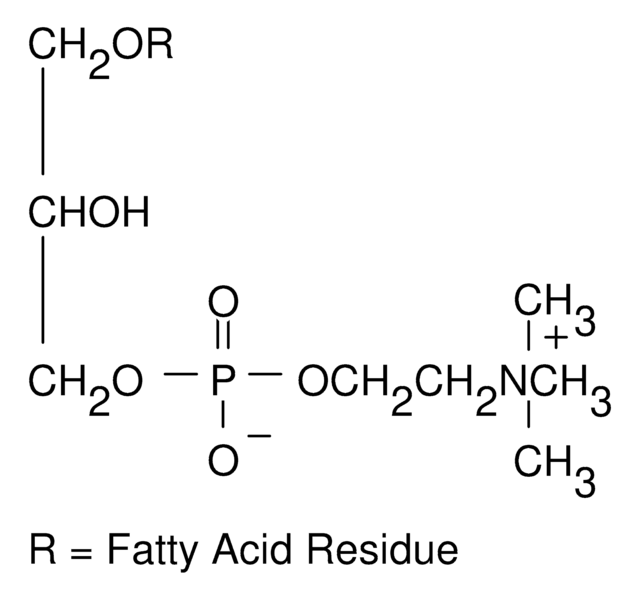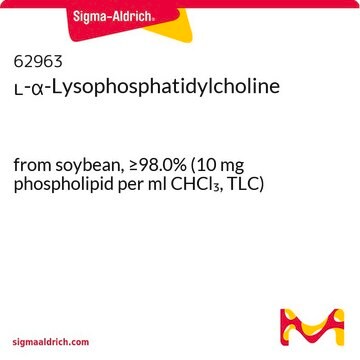L2131
1-Stearoyl-sn-glycero-3-phosphocholine
≥99%, powder
Sinónimos:
L-α-Lysophosphatidylcholine, stearoyl, Lysolecithin, stearoyl
About This Item
Productos recomendados
biological source
synthetic (organic)
Quality Level
assay
≥99%
form
powder
color
white
functional group
phospholipid
lipid type
phosphoglycerides
shipped in
ambient
storage temp.
−20°C
SMILES string
O[C@](COP([O-])(OCC[N+](C)(C)C)=O)([H])COC(CCCCCCCCCCCCCCCCC)=O
InChI
1S/C26H55NO7P/c1-5-6-7-8-9-10-11-12-13-14-15-16-17-18-19-20-26(29)32-23-25(28)24-34-35(30,31)33-22-21-27(2,3)4/h25,28H,5-24H2,1-4H3,(H,30,31)
InChI key
ARQYPVZFUYHQFR-UHFFFAOYSA-N
Categorías relacionadas
Application
<li><strong>Plant-derived phenolics inhibit the accrual of structurally characterised protein and lipid oxidative modifications: </strong> Demonstrates the role of 1-Stearoyl-sn-glycero-3-phosphocholine in preventing oxidative modifications in cellular membranes, pertinent to drug delivery systems and cell signaling studies (Soler-Cantero et al., 2012).</li>
</ul>
Biochem/physiol Actions
Storage Class
11 - Combustible Solids
wgk_germany
WGK 3
flash_point_f
Not applicable
flash_point_c
Not applicable
ppe
Eyeshields, Gloves, type N95 (US)
Elija entre una de las versiones más recientes:
¿Ya tiene este producto?
Encuentre la documentación para los productos que ha comprado recientemente en la Biblioteca de documentos.
Los clientes también vieron
Nuestro equipo de científicos tiene experiencia en todas las áreas de investigación: Ciencias de la vida, Ciencia de los materiales, Síntesis química, Cromatografía, Analítica y muchas otras.
Póngase en contacto con el Servicio técnico












